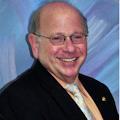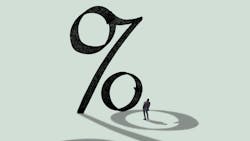Private practice purchase guidelines for today’s new dentists
Increased debt from student loans has triggered necessary changes in both monetary requirements and work experience for purchasing private practices. Increased operating expenses with inflation and rising interest rates require ever heightened management abilities.1 Larger practices with enhanced revenues must now support higher total costs of repaying all debt.
Only six years ago, brokers believed a new graduate could leave school and immediately buy or assume a practice after a reasonable period of transfer from a retiring dentist. In 2016, the average educational debt of graduating dental students was just over $219,000, whereas today, the debt load is closer to $300,000. Dental school is currently 16 times more costly than 40 years ago while income is only three times higher.2 A 2020 survey by the American Dental Education Association indicated less than 60% of US dental school seniors felt prepared to manage a successful business.3-5
Debt-to-income ratios
Debt-to-income ratios of new graduates are scrutinized by bankers to determine the loan size for practice purchase. Understanding both experience and monetary requirements allows planning for clinical and management skills required for practice and operation.6,7 A student loan repayment plan that minimizes the size of repayments along with a practice that maximizes income is necessary when purchasing a practice. Senior dentists wishing to transition their practice also need to know the expectations of bankers and brokers in determining the selling price.
Banker essentials for purchase
Production history: New dentists must possess clinical skill, practice speed, and administrative capability in order to run a sizable practice and repay debt. Bankers currently expect a successful work history with two to three years of experience. Lending institutions typically require knowledge of how much gross production was performed during this period.
Seller’s profitability: To be able to have enough profit to repay loans, banks demand the practice seller’s percentage of overhead and profit/loss tax reports for two to three prior years to determine if the practice is viable. An overhead of approximately 55-60% is expected for an active general practice, while an overhead of 60-65% is characteristic of an older or senior practice.
Personal financial history: Bankers want confidence that a borrower is a responsible party. Up to 24 months of personal financial history may be examined.
Indebtedness: Fortunately, it is not the total amount of indebtedness that determines whether a loan for a practice is made, but rather the debt-to-income ratio.
Current liquidity requirements, cash available to support operations: Liquidity requirements vary from bank to bank and change based on the economy. The liquidity, or cash on hand, that a purchaser has will affect the interest rate of a loan used to buy a practice.
In general, a purchaser with more liquidity represents less risk to the bank, so a lower interest rate on the loan is available. Sources of liquidity may include a spouse’s income, a parent or relative’s cosignature, brokerage accounts available, etc.
As larger practices need more operational dollars, the required cash reserve varies based on practice revenues. Current requirements vary widely from 5-30% of the purchase price. Before obtaining a loan at a reasonable interest rate, a purchaser must show enough funds available for practice operations. Some institutions will grant a loan with almost no liquidity but with a correspondingly high interest rate.
A business plan: Bankers are rigorous, requiring a comprehensive business plan projecting: practice gross and net income, employee payroll/salaries (including self), health and business insurances, supply purchases, equipment/maintenance, physical plant (air conditioning, heating, gas, electric), office rents, taxes, marketing/website, consultant, accounting, legal consultations, and unspecified operating costs.
An inventory of all clinical and nonclinical equipment, including supplies for purchase, is obligatory. A monthly personal budget should include student loan repayments, personal living expenses, transportation, housing, food, and clothing.7
Current transition consultant and broker expectations
Practice price
Purchasing a busy and profitable practice means the purchaser immediately gets a raise because the entire net of the practice goes to the practitioner instead of being shared with an employer.
Practice price is based on gross income and depends on profitability, which varies by state and location and includes economic trends that may increase operating costs. Currently, less favorable practice locations may sell for as little as 60% of gross.
Other factors affecting profitability include the primary patient insurance base for the practice, practice age, location, newness, operability of equipment, current sterilization facilities, modernity of the office furnishings, and general impression.
Future treatment on existing patients
Approximating the amount of remaining work to be performed on existing patients in the record base is crucial when determining possible future profitability. For example, when comparing high and low grossing practices, both may have the same number of viable patients.
However, the high grossing practice may have already performed most needed treatments, while in the lower grossing practice (e.g., some senior practices where the seller is approaching retirement), the seller may have performed only base patient management.
The latter situation with lower gross production but ample treatment yet to be performed and a lower practice price can be the greater asset. The broker or transition specialist should help with this determination.
Cash flow levels
Average practices for sale can gross $700,000 to $800,000, with a sale price typically 65-70% of gross receipts. Purchase costs may lie between $450,000 to $560,000. For higher grossing practices, e.g., $1,000,000, the price may range from $650,000 to $700,000.
As net receipts of a practice determine the dentist’s income, a busy, higher grossing practice (at higher cost and bigger patient load) is needed for cash-flow income to pay both student debt and practice debt. Consultants interviewed said today’s graduate servicing a high level of debt may require a net income of approximately $300,000 to $400,000.
Interest rates to avoid
Avoid bank loans with floating and variable interest rates. Interest rates are still prospectively manageable and with diligence can allow repayment of all debt. However, with higher debt level, even a modest rise in interest rates makes management of dual repayment of school and practice debt more difficult.
Salary differential
When considering “sweat equity,” or salary differential, to buy a practice, brokers maintained that only 20% of practice purchase situations are completed if a pre-work/purchase contract is not first established. In this plan, one is paid less salary while working in the practice to be purchased, with the salary differential being applied to the price.
When entering a work-then-buy situation, it is advisable to establish the buy-in amount in writing beforehand. If the efforts as a new practitioner cause practice value and gross receipts to rise substantially, it is unreasonable to pay the difference at a time of final purchase.
Noncompete rules at DSOs
When working for a DSO to reduce debt and gain management experience, it is critical to check the noncompete rules of the DSO with an attorney before employment. One may not be able to purchase the future private practice desired if lying geographically too close to an employing DSO.
Interest and inflation effects on practices and their purchase
Increased interest rates and inflation pressures squeeze practice profitability by raising overhead costs, potentially reducing net profitability and sale value. Impediments caused by rapidly increasing interest rates and inflationary pressures on overhead costs are not limited to graduates but can alter seller options as well, including delaying retirement.
Responding to increased overhead costs, practitioners raise fees to keep pace with escalating costs. When price increases are small and happen slowly, they seldom limit moderate treatment choices.
Today, workers’ real income is declining because wage increases are not in step with inflation. From August 2021 to August 2022, real average hourly earnings combined with a decrease in the average workweek resulted in a 3.2% decrease in real average weekly earnings.8
In an inflationary environment, large increases in dental service fees may limit a patient’s utilization of basic services. Patients without insurance may face paying for dental visits vs. basic living expenses. Inflationary trends could limit some practitioners’ ability to raise fees sufficiently to match costs.
Those interested in owning their own practice with high levels of student debt need advanced clinical skills and management expertise to operate larger practices. Rising economic challenges require training in pace, administrative ability, and financial organization. Consultation with local dental-knowledgeable brokers, bankers, attorneys, and accountants is suggested.
Editor's note: This article has been updated as of November 2024. It originally appeared in the January 2023 print edition of Dental Economics magazine. Dentists in North America are eligible for a complimentary print subscription. Sign up here.
References
1. Elmore B. Forecasting the future. J Amer Col Dent. 2020;87(4):28-32.
2. American Dental Education Association. ADEA Survey of Dental School Seniors, 2019 Graduating Class Tables Report. March 2020. Table 21: Level of Respondents’ Educational Debt, by Type of School:24.
3. Istrate EC, Slapar FJ, Mallarapu M, et al. Dentists of tomorrow 2020: an analysis of the results of the 2020 ADEA survey of U.S. dental school seniors summary report. ADEA Education Research Series. 2021;(1). https://www.adea.org/Seniors2020/. Accessed January 3, 2022.
4. Haskell B, Keefe T. Surviving orthodontic graduate debt: making correct career choices to manage debt re-payment, reduction or forgiveness. Angle Orthod. 2019;89(4):529-534.
5. A report of the ADEA Presidential Task Force on the cost of higher education and student borrowing. American Dental Education Association. March 2013.
6. Haskell BS, Keefe TJ. Practice purchase and private employment options for the new graduate with student debt: a projected scenario analysis for loan repayment. J Am Dent Assoc. 2022;153(5):429-439.
7. 5 easy steps to determine your startup costs. Chase for Business. https://business.chase.com/resources/start/determine-startupcosts. Accessed November 2, 2021.
8. TED: The economics daily. US Bureau of Labor Statistics. Sept. 19, 2022. https://www.bls.gov/opub/ted/2022/real-average-hourly-earnings-down-2-8-percent-from-august-2021-to-august-2022.htm
About the Author

Bruce Haskell, DMD, PhD, FACD
Bruce Haskell, DMD, PhD, FACD, has practiced orthodontics from 1975 to the present. He is currently a part-time professor of orthodontics at the University of Kentucky, Department of Orthodontics, since 2010. Dr. Haskell obtained his dental degree from the University of Pittsburgh and orthodontic training at the Eastman Institute for Oral Health. He is a diplomate of the American Board of Orthodontics, a fellow and former chair of the American College of Dentists for Kentucky, and a USAF DC veteran.

Thomas Keefe, PhD
Thomas Keefe, PhD, earned his Doctorate from the State University of New York at Buffalo in organizational behavior and HR management. He was a faculty member at Indiana University Southeast’s School of Business and is currently a Professor Emeritus of Business Administration. As escalating costs and debt associated with earning a higher education was causing many to make choices that would burden them for years, his focus became researching, writing, and educating students about career and financial challenges.
